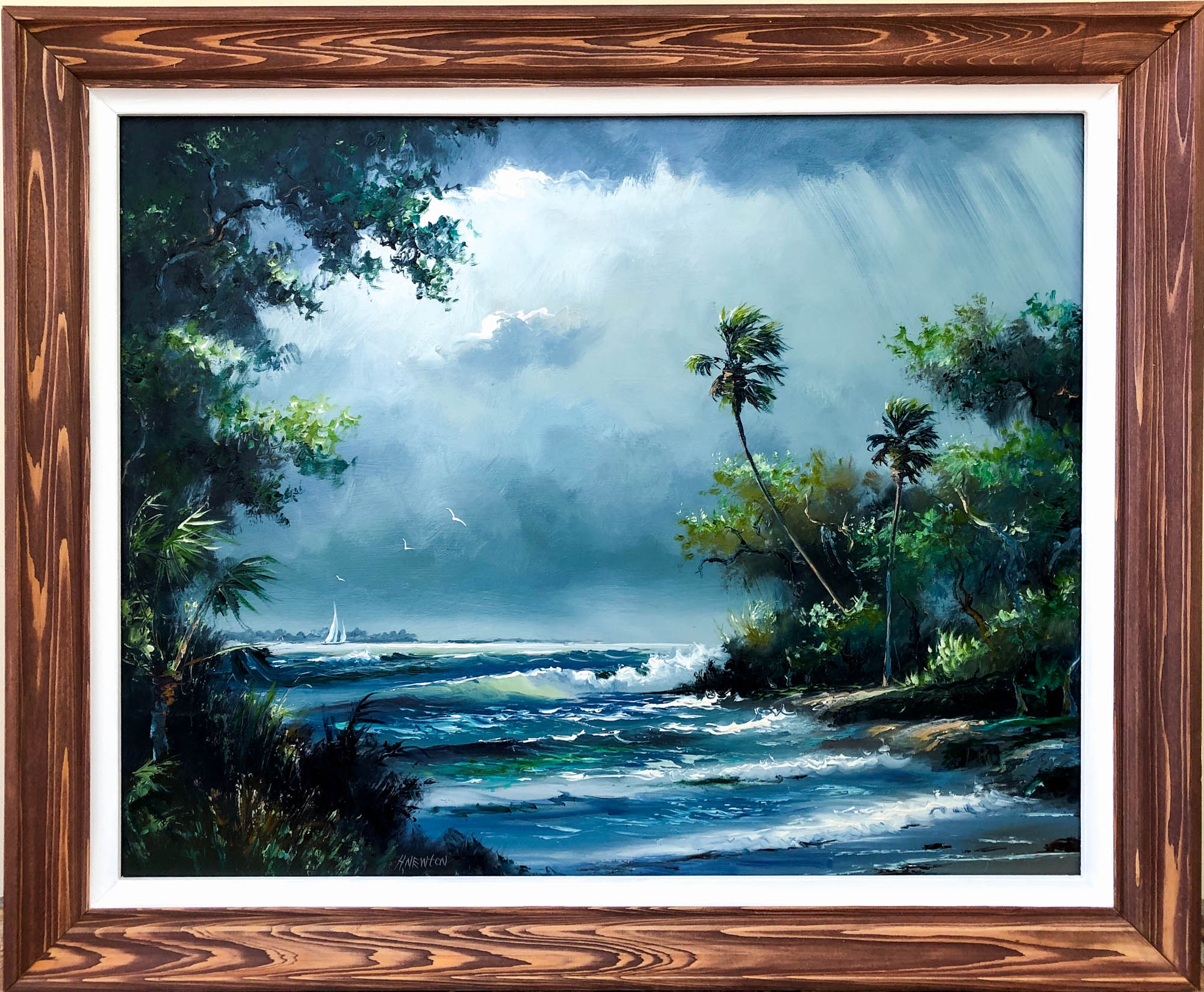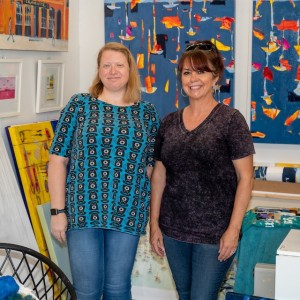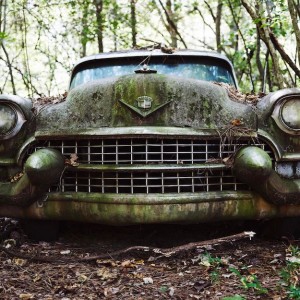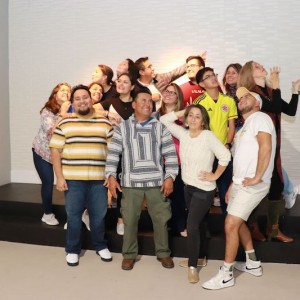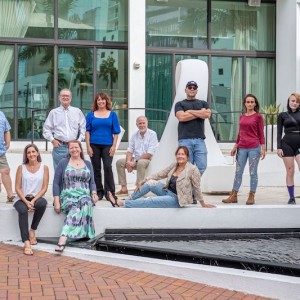The concept of ‘Old Florida’ is often romanticized and with good reason. ‘Old Florida’ evokes simpler times, when a state rife with natural beauty was allowed to flourish in peace. Wild oysters still filled the Apalachicola Bay, coastal ecosystems weren’t threatened by rising sea levels and urban development hadn’t made its full mark on the state’s biodiversity. The era of ‘Old Florida’, however, is a double-edged sword. The seemingly idyllic time period is marred, deeply so, by severe undertones of racial injustice and violence, spanning from the time Spanish conquistadors first arrived through the Civil Rights battles of the 20th century and beyond.
It is out of that era, of the Jim Crow South, that the Florida Highwaymen, the state’s preeminent landscape artists, were born. The story of ‘Old Florida’ is complex and nuanced, filled with equal parts beauty and strife. However, it is left incomplete without the inclusion of the Highwaymen. People like Roger Lightle, owner of the Highwaymen Art Specialists, Inc. and Mary Davis Wallace, the Public Art Manager for the city of Sarasota seem to agree. That’s why in January, a collection of 26 paintings by the Highwaymen–on loan from Lightle–went on display in the Cultural Heritage Exhibit in the City Hall atrium.
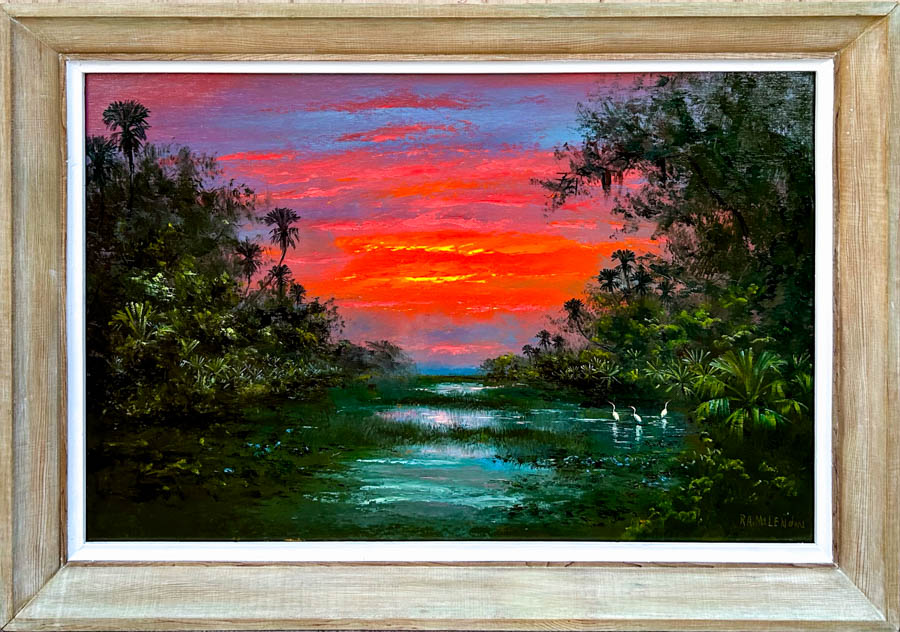
While the paintings, which largely depicted the raw beauty of Florida’s untouched landscapes, stand on their own as masterful artwork, it is the story behind them that makes them all the more special. The Highwaymen, a loose-knit group of 26 African-
American artists—featuring 25 men and one woman–unofficially began in the mid 1950s when 19-year old artist Harold Newtown began selling landscape paintings door to door and out of the trunks of their cars along highways. Soon after, others followed suit and began a cultural movement that was in part defined by the social parameters of their time: because of the color of their skin, these artists were not allowed to show their work in the traditional galleries and art shows, thus forcing them to sell their paintings in unconventional places, like the side of a highway. “Harold Newtown began painting in this small community known as Gifford, just five minutes north of Vero Beach. It was a small, agricultural community, maybe five blocks by five blocks in size,” says Lightle. “His neighbor, Roy McClendon, noticed Newtown’s initial success and wanted to put his own art skills to work. He realized that there was a path out of preordained careers of menial labor within the agricultural industry and that path was with a paintbrush.”
If you buy this, I’ll be able to eat tonight
For the Highwaymen, painting landscapes was a means to survive. Their legacy is rife with stories like that of Mary Ann Carroll’s who once paid for utility bills with paintings or Alfred Hair, one of the group’s most prominent artists, who was said to have been able to paint an 18 x 24 canvas in under an hour, often times selling pieces while the paint was still wet. For these artists, art was never a hobby–it was a way to provide for themselves and their families, a sentiment that is echoed in the subject matter of their paintings. “Certain backcountry scenes like the Poinsettia tree, the fire sky sunset and the tree-lined beaches were the most sought after by customers and thus the most repeated landscapes by the Highwaymen. None of them are the same—they are all individual scenes that vary in some way, shape or form, but nevertheless repeated because they knew that they would sell,” says Lightle. “They needed to create artwork that they knew was going to sell.”
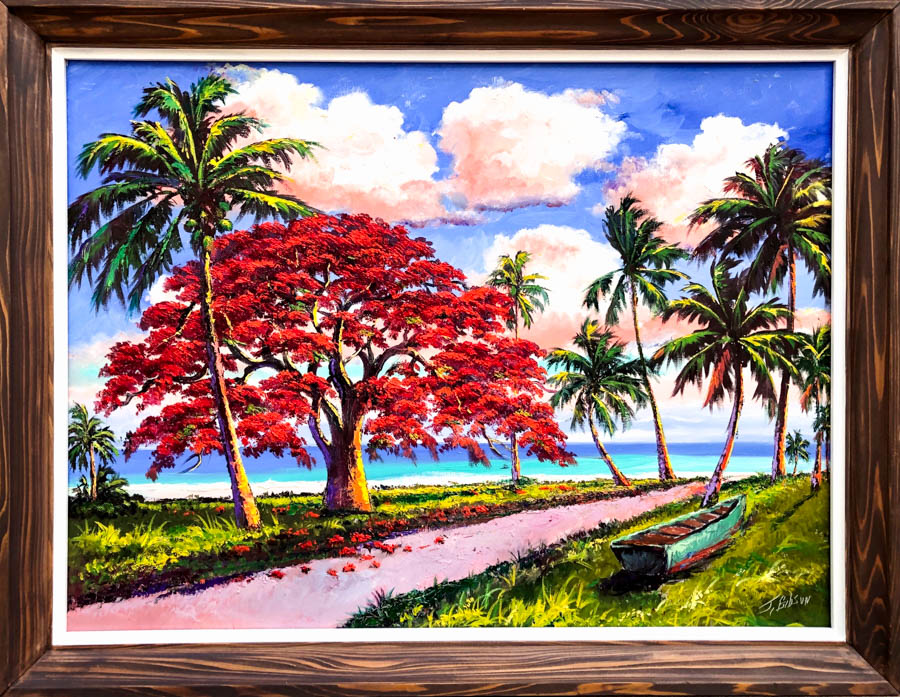
The landscapes themselves have a place in the story of Old Florida. The paintings, which range in date from the 1950s through the 1980s, tell a story of a different time period. Residential and commercial development had not yet taken its full hold of the state, leaving millions of acres of wilderness untouched. These depictions of rural Florida, often forgoing formal color theory in favor of brighter, more explosive colors, were from the minds of rural artists, who used their intuition to highlight the natural beauty of the state. “When you look at these paintings, knowing that story, you’re also seeing a struggle. This isn’t just a peaceful landscape–there is an intensity in these landscape paintings because these are paintings to survive,” says Wallace. “That’s really what we want to bring to City Hall. City Hall has been transformed into a moment of time, with all these records and depictions of what Old Florida used to look like, but it’s also a record of a time with stories that need to be told. We’re really happy to be able to provide that opportunity to the public.”
The Highwaymen remained active throughout the 1980s, with larger national and international acclaim after Jim Fitch, a Florida art historian, dubbed the group “The Highwaymen” in the mid-90s. Today their paintings live on across the country, in collections like Lightle’s or in archives in the Smithsonian. “What you’re hearing about with the Highwaymen is truly an American success story. Not necessarily each and every artist was at the same level, but there were some within the group that were masters of their craft,” says Lightle. “By mastering the skill of painting, they left a volume of art across our state and nation that is now being sought after.





